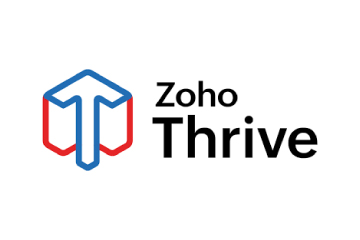Ron Kaufman has outlined his vision for the future, foreseeing mutually beneficial partnerships that enhance customer convenience through consolidation. He emphasises the importance of synergy among diverse service providers driving these partnerships and creating interconnected ecosystems.
Customers aren’t mere statistics; they arrive, engage, and seek value. Ron Kaufman, CEO of Uplifting Service, holds this philosophy at the core of his insights. In a world driven by customer-centricity, understanding the dynamics of service excellence is paramount.
In an interview with CXM Today, Kaufman delves into his profound journey—from Ultimate Frisbee to the forefront of revolutionising service cultures. He uncovers the essence of exceptional service, the significance of the “spirit of the game,” and the future landscape of interconnected ecosystems.
Through the eyes of an industry luminary, he shared his thoughts on how service is about taking action to create value, and this principle resonates across every interaction, from the boardroom to the frontline.
Excerpts from the interview:
Brands, especially in APAC, are forming mutually beneficial partnerships for loyalty programmes or app consolidation. How do you see this future playing out?
I believe what’s currently unfolding is the emergence of ecosystems, particularly in the APAC region. These ecosystems serve as environments where trust, appreciation, and connection thrive, encompassing past interactions and present engagements, fostering relationships and inspiring exploration. This dynamic also involves an inherent curiosity about potential future interactions.
As this integration deepens, creating a seamless and personalised experience, individuals are more inclined to revisit the same ecosystem for immediate and future needs. However, fresh offers are perpetually arising in the global competitive landscape, and new service providers are continuously entering the scene. Presently, a mere click can transport consumers elsewhere, dissolving loyalty in an instant.
So, what will truly anchor individuals within these consolidated partnerships and interconnected ecosystems is the synergy between various service providers. When these providers collaborate closely to enhance customer ease and convenience, retention within these environments becomes the norm. Technology is integral to this evolution, which plays a pivotal role in shaping these dynamics. This integration prompts people to consciously choose a particular ecosystem as their hub, where they not only transact but also receive tailored experiences and willingly share their information.
In my perspective, this trend will persist for the foreseeable future. While there will always be room for disruptive newcomers and innovative offers not yet integrated into any ecosystem, individuals have grown accustomed to exploring novel options. This openness stems from the understanding that new alternatives often present opportunities for even better experiences.
What are the common reasons customers churn, and how can businesses retain them?
Customers don’t simply “churn.” Customers arrive, engage, onboard, and are served. Occasionally, customers are lost. However, referring to them as churned customers diminishes their humanity. The reason why customers leave and new customers come, which is often referred to as churn in business, is because something initially attracted them.
Customers believed they would receive what they wanted, needed, hoped for, preferred, and valued. However, at some point, the company fails to provide that value or loses touch with the customer’s values. As a result, another service provider emerges, offering a different value proposition that appears to fulfil the customer’s desires, and they decide to switch. This phenomenon is related to the fundamental definition of service, which involves taking action to create value for someone else. This applies to B2B and B2C scenarios, from frontline interactions to the boardroom. Service is about taking action to create value.
So, how does a company initially attract a customer? The prospect must perceive the company as capable of delivering the value they seek. To retain customers, a company must consistently provide that value, adapting to the customer’s changing needs. It is crucial to stay connected and updated with what the customer currently values. Customers leave when they no longer receive the value they require at a given moment or see an alternative offer that seems more appealing—the proverbial grass appearing greener on the other side.
How did Ultimate Frisbee lead you to a career centred on improving service?
I was incredibly fortunate to attend high school in Westport, Connecticut, when Ultimate Frisbee was gaining popularity. The game’s rules were established at a different high school in nearby New Jersey, and a maths teacher introduced us to the game and its rules.
What struck me about Ultimate Frisbee was its first rule, which emphasised the “spirit of the game” rather than technicalities like player count or scoring. The spirit of the game meant that players were responsible for the quality of play, mutual enjoyment, respect, and their behaviour towards one another. This early exposure to a style of interaction based on the spirit of the game had a profound impact on me.
We even believed that the spirit was more important than the score, despite Ultimate Frisbee being a competitive game, much like capitalism or other social practices that involve competition. It taught me that valuing the spirit of an activity, rather than solely focusing on outcomes, was crucial. This principle resonated with me deeply.
Later, when I became involved in organising Frisbee festivals, tournaments, play days, and other activities professionally, I realised that different people valued different aspects of the game. Some participants wanted to learn how to play, others wanted to showcase their dog’s Frisbee-catching skills, while entities like the police department sought well-behaved park visitors, radio stations aimed for publicity, and drink vendors aimed for sales. Frisbee experts were eager to demonstrate their prowess with the flying disc.
Through these experiences, I learned that everyone has different priorities when coming together to participate in an activity. While competition might be a part of it, the spirit of the game remained paramount. This understanding was crucial as I ventured into my career, focused on improving service.
Numerous parties are involved when providing services, such as service providers, recipients, internal partners, communities, and customers. We are all interconnected, and although competition for price, value, market share, and profit margin exists, the long-term importance lies in the spirit with which we interact.
In its pursuit of becoming a leader in service excellence, Singapore sought someone who could educate hundreds of thousands of adults on enhancing their service delivery. This endeavour went beyond procedures, SOPs (Standard Operating Procedures), or SLAs (Service Level Agreements). It required a spirited approach, which I was well-equipped to teach based on my earlier career in Ultimate Frisbee, where I had experienced this spirit across the globe.
Overall, my journey in Ultimate Frisbee exposed me to the significance of the spirit of the game and its applicability to various aspects of life, including my career centred on improving service.
What practices do companies that offer world-class service have in common? What can we learn from them?
Any organisation, whether a company, government agency, nonprofit, or community organisation, can differentiate itself by consistently offering world-class service, even as the world changes and customer preferences evolve. These exceptional organisations build cultures that prioritise continuous improvement and uplifting service. They don’t solely focus on delivering immediate high-quality service, which is vital. Instead, they create an entire cultural environment where the driving passion is to go above and beyond in creating value for their customers. This culture of uplifting service becomes a defining factor of the organisation and sets it apart from others.
A company that establishes and nurtures such a culture naturally attracts the best service providers. Employees are motivated to perform at their highest level and eager to attract and work with like-minded colleagues who share the same commitment to outstanding service. Additionally, these companies attract and retain customers who appreciate and value the exceptional experiences they receive.
What sets apart companies offering world-class service is their dedication to building and maintaining a culture of uplifting service, which drives continuous improvement and attracts and retains top talent and loyal customers. Other organisations can learn to enhance their service quality and achieve long-term success by adopting and implementing similar practices.
What are some ways leaders can measure service on an organisational scale?
One of the challenges when discussing service measurement lies in the variety of methods, survey formats, questions, metrics, and assessment scales available. However, at its core, most of these approaches aim to answer a fundamental question: How did we perform? Were you satisfied, unsatisfied, or very satisfied? Will you consider returning? Would you recommend us to others? Do you plan to make additional purchases? In essence, this process revolves around evaluation: assessing our performance. This involves collecting substantial data, analysing trends, and comparing figures between quarters, months, or years. Yet, the ultimate goal of all this data is to ascertain:
What actions should we undertake that we haven’t yet?
Rather than framing it as ‘How did we do?’, which necessitates deducing the next steps, leaders have a strategic option: they can measure service on an organisational scale by posing questions to customers such as, “What do you think we should do? What improvements can we make? What are your desires?” It’s also crucial to inquire about ongoing practices that customers wish to see maintained and any aspects they would prefer to see discontinued. Furthermore, leaders should explore uncharted territory: What are we yet to explore that you would appreciate? Is this exploration something you would find valuable?
Consequently, the initial facet of measuring organisational service entails clarifying the focus: What precisely are you gauging? Are you solely monitoring perceptions regarding past actions, or are you actively engaging customers to elicit their desires? Subsequently, the second measurement dimension involves assessing the rate of novel ideas emerging from your team. How many of these ideas transition into implementation?
Another critical layer is understanding the customer’s journey: How do they respond to introducing new strategies and concepts? This involves gauging their reactions to these implementations, specifically tailored to create additional value or enhance existing value propositions.




















 Microsoft Dynamics 365 represents a robust cloud-based CRM solution with features such as pipeline assessment, relationship analytics, and conversational intelligence. It utilises AI-powered insights to provide actionable intelligence via predictive analytics, lead scoring, sentiment analysis, etc. Currently, Microsoft operates in 190 countries and is made up of more than 220,000 employees worldwide.
Microsoft Dynamics 365 represents a robust cloud-based CRM solution with features such as pipeline assessment, relationship analytics, and conversational intelligence. It utilises AI-powered insights to provide actionable intelligence via predictive analytics, lead scoring, sentiment analysis, etc. Currently, Microsoft operates in 190 countries and is made up of more than 220,000 employees worldwide. HubSpot is an inbound marketing, sales, and customer service software provider, offering robust CRM and automation solutions. Some of its products include Marketing Hub, Sales Hub, Operations Hub, Content Hub, Commerce Hub, Marketing Analytics and Dashboard Software. Guided by its inbound methodology, HubSpot enables companies to prioritise innovation and customer success.
HubSpot is an inbound marketing, sales, and customer service software provider, offering robust CRM and automation solutions. Some of its products include Marketing Hub, Sales Hub, Operations Hub, Content Hub, Commerce Hub, Marketing Analytics and Dashboard Software. Guided by its inbound methodology, HubSpot enables companies to prioritise innovation and customer success. Monday.com is a project management software company, offering a cloud-based platform that enables businesses
Monday.com is a project management software company, offering a cloud-based platform that enables businesses  Headquartered in San Mateo, California, Freshworks is a global AI-powered business software provider. Its tech stack includes a scalable and comprehensive suite for IT, customer support, sales, and marketing teams, ensuring value for immediate business impact. Its product portfolio includes Customer Service Suite, Freshdesk, Freshchat, Freshcaller, Freshsuccess, and Freshservice. Freshservice for Business Teams has helped several global organisations to enhance their operational efficiency.
Headquartered in San Mateo, California, Freshworks is a global AI-powered business software provider. Its tech stack includes a scalable and comprehensive suite for IT, customer support, sales, and marketing teams, ensuring value for immediate business impact. Its product portfolio includes Customer Service Suite, Freshdesk, Freshchat, Freshcaller, Freshsuccess, and Freshservice. Freshservice for Business Teams has helped several global organisations to enhance their operational efficiency. Talkdesk offers an innovative AI-powered customer-centric tech stack to its global partners. The company provides generative AI integrations, delivering industry-specific solutions to its customers. Talkdesk CX Cloud and Industry Experience Clouds utilise modern machine learning and language models to enhance contact centre efficiency and client satisfaction.
Talkdesk offers an innovative AI-powered customer-centric tech stack to its global partners. The company provides generative AI integrations, delivering industry-specific solutions to its customers. Talkdesk CX Cloud and Industry Experience Clouds utilise modern machine learning and language models to enhance contact centre efficiency and client satisfaction.

 The company offers comprehensive cloud-based solutions, such as Microsoft Dynamics 365, Gaming Consoles, Microsoft Advertising, Copilot, among other things, to help organisations offer enhanced CX and ROI. Its generative-AI-powered speech and voice recognition solutions,such as Cortana and Azure Speech Services empowers developers to build intelligent applications.
The company offers comprehensive cloud-based solutions, such as Microsoft Dynamics 365, Gaming Consoles, Microsoft Advertising, Copilot, among other things, to help organisations offer enhanced CX and ROI. Its generative-AI-powered speech and voice recognition solutions,such as Cortana and Azure Speech Services empowers developers to build intelligent applications. IBM is a global hybrid cloud and AI-powered
IBM is a global hybrid cloud and AI-powered  Uniphore is an enterprise-class, AI-native company that was incubated in 2008. Its enterprise-class multimodal AI and data platform unifies all elements of voice, video, text and data by leveraging Generative AI, Knowledge AI, Emotion AI and workflow automation. Some of its products include U-Self Serve, U-Assist, U-Capture, and U-Analyze. Its Q for Sale is a conversational intelligence software that guides revenue teams with AI-powered insights, offering clarity on how to effectively keep prospects engaged.
Uniphore is an enterprise-class, AI-native company that was incubated in 2008. Its enterprise-class multimodal AI and data platform unifies all elements of voice, video, text and data by leveraging Generative AI, Knowledge AI, Emotion AI and workflow automation. Some of its products include U-Self Serve, U-Assist, U-Capture, and U-Analyze. Its Q for Sale is a conversational intelligence software that guides revenue teams with AI-powered insights, offering clarity on how to effectively keep prospects engaged. Google Cloud accelerates every organisation’s ability to digitally transform its business. Its enterprise-grade solutions leverage modern technology to solve the most criticial business problems
Google Cloud accelerates every organisation’s ability to digitally transform its business. Its enterprise-grade solutions leverage modern technology to solve the most criticial business problems 
 8×8 offers out-of-the-box contact centre solutions, assisting all-size businesses to efficiently meet customer needs and preferences. It offers custom CRM integrations support and integrates effortlessly with third-party CRMs like Salesforce, Microsoft Dynamics, Zendesk, and more. Offering global support in all time zones & development teams in 5 continents, its patented geo-routing solution ensures consistent voice quality.
8×8 offers out-of-the-box contact centre solutions, assisting all-size businesses to efficiently meet customer needs and preferences. It offers custom CRM integrations support and integrates effortlessly with third-party CRMs like Salesforce, Microsoft Dynamics, Zendesk, and more. Offering global support in all time zones & development teams in 5 continents, its patented geo-routing solution ensures consistent voice quality. Sprinklr is a comprehensive enterprise software company for all customer-focused functions. With advanced AI, Sprinklr’s unified customer experience management (Unified-CXM) platform lets organisations offer human experiences to every customer, every time, across any modern channel.
Sprinklr is a comprehensive enterprise software company for all customer-focused functions. With advanced AI, Sprinklr’s unified customer experience management (Unified-CXM) platform lets organisations offer human experiences to every customer, every time, across any modern channel.
 Upland offers a comprehensive suite of contact centre and customer service solutions with products including InGenius, Panviva, Rant & Rave, and RightAnswers. InGenius enables organisations to connect their existing phone system with CRM, further enhancing agent productivity. Panviva provides compliant and omnichannel capabilities for highly regulated industries. Whereas, Rant & Rave, and RightAnswers are its AI-powered solutions,
Upland offers a comprehensive suite of contact centre and customer service solutions with products including InGenius, Panviva, Rant & Rave, and RightAnswers. InGenius enables organisations to connect their existing phone system with CRM, further enhancing agent productivity. Panviva provides compliant and omnichannel capabilities for highly regulated industries. Whereas, Rant & Rave, and RightAnswers are its AI-powered solutions,  Zoho Social, a part of Zoho’s suite of 50+ products, is a comprehensive social media management platform for businesses and agencies. The Zoho Social dashboard includes a robust set of features, such as Publishing Calendar, Bulk Scheduler, and Approval Management to offer businesses all the essential social media publishing tools. Its monitoring tools help enterprises track and respond to relevant social conversations.
Zoho Social, a part of Zoho’s suite of 50+ products, is a comprehensive social media management platform for businesses and agencies. The Zoho Social dashboard includes a robust set of features, such as Publishing Calendar, Bulk Scheduler, and Approval Management to offer businesses all the essential social media publishing tools. Its monitoring tools help enterprises track and respond to relevant social conversations. Hootsuite, headquartered in Vancouver, is a social media management platform that streamlines the process of managing multiple social media accounts. Some of its core offerings include social media content planning and publishing, audience engagement tools, analytics and social advertising. Its easy-to-integrate capabilities help marketing teams to schedule and publish social media posts efficiently.
Hootsuite, headquartered in Vancouver, is a social media management platform that streamlines the process of managing multiple social media accounts. Some of its core offerings include social media content planning and publishing, audience engagement tools, analytics and social advertising. Its easy-to-integrate capabilities help marketing teams to schedule and publish social media posts efficiently. Brandwatch enables businesses to build and scale the optimal strategy for their clients with intuitive, use-case-focused tools that are easy and quick to master. Bringing together consumer intelligence and social media management, the company helps its users react to the trends that matter, collaborate on data-driven content, shield the brand from threats and manage all the social media channels at scale.
Brandwatch enables businesses to build and scale the optimal strategy for their clients with intuitive, use-case-focused tools that are easy and quick to master. Bringing together consumer intelligence and social media management, the company helps its users react to the trends that matter, collaborate on data-driven content, shield the brand from threats and manage all the social media channels at scale. Zoho Corporation offers innovative and tailored software to help leaders grow their business. Zoho’s 55+ products aid sales and marketing, support and collaboration, finance, and recruitment requirements. Its customer analytics capabilities come with a conversational feature, Ask Zia. It enables users to ask questions and get insights in the form of reports and widgets in real-time.
Zoho Corporation offers innovative and tailored software to help leaders grow their business. Zoho’s 55+ products aid sales and marketing, support and collaboration, finance, and recruitment requirements. Its customer analytics capabilities come with a conversational feature, Ask Zia. It enables users to ask questions and get insights in the form of reports and widgets in real-time. Salesforce-owned Tableau is an AI-powered analytics and business intelligence platform, offering the breadth and depth of capabilities that serve the requirements of global enterprises in a seamless, integrated experience. Marketers can utilise generative AI models, AI-powered predictions, natural language querying, and recommendationsons.
Salesforce-owned Tableau is an AI-powered analytics and business intelligence platform, offering the breadth and depth of capabilities that serve the requirements of global enterprises in a seamless, integrated experience. Marketers can utilise generative AI models, AI-powered predictions, natural language querying, and recommendationsons. Fullstory is a behavioural data platform, helping C-suite leaders make informed decisions by injecting digital behavioural data into its analytics stack. Its patented technology uncovers the power of quality behavioural data at scale, transforming every digital visit into actionable insights. Enterprises can increase funnel conversion and identify their highest-value customers effortlessly.
Fullstory is a behavioural data platform, helping C-suite leaders make informed decisions by injecting digital behavioural data into its analytics stack. Its patented technology uncovers the power of quality behavioural data at scale, transforming every digital visit into actionable insights. Enterprises can increase funnel conversion and identify their highest-value customers effortlessly. Contentsquare is a cloud-based digital experience analytics platform, helping brands track billions of digital interactions, and turn those digital
Contentsquare is a cloud-based digital experience analytics platform, helping brands track billions of digital interactions, and turn those digital  Amplitude is a product analytics platform, enabling businesses to track visitors with the help of collaborative analytics. The platform leverages the capabilities of
Amplitude is a product analytics platform, enabling businesses to track visitors with the help of collaborative analytics. The platform leverages the capabilities of  Adobe Experience Cloud offers a comprehensive set of applications, capabilities, and services specifically designed to address day-to-day requirement for personalised customer experiences at scale. Its platform helps play an essential role in managing different digital content or assets to improve customer happiness. Its easy-to-optimise content gives users appropriate marketing streams, ensuring product awareness.
Adobe Experience Cloud offers a comprehensive set of applications, capabilities, and services specifically designed to address day-to-day requirement for personalised customer experiences at scale. Its platform helps play an essential role in managing different digital content or assets to improve customer happiness. Its easy-to-optimise content gives users appropriate marketing streams, ensuring product awareness.
 Started in 2005 in a Sweden-based small town, Norrköping, Voyado offers a customer experience cloud platform that includes a customer loyalty management system. This platform helps businesses design and implement customer loyalty programs, track customer
Started in 2005 in a Sweden-based small town, Norrköping, Voyado offers a customer experience cloud platform that includes a customer loyalty management system. This platform helps businesses design and implement customer loyalty programs, track customer  TapMango provides a comprehensive, customisable, flexible and feature-rich customer loyalty program. The loyalty tools include an integrated suite of customised consumer-facing technology, easy-to-use merchant tools, and automation algorithms, all aimed at enhancing customer experience. Adaptable to any industry, TapMango’s platform helps merchants compete with larger chains, converting customer one-time purchases into profitable spending habits.
TapMango provides a comprehensive, customisable, flexible and feature-rich customer loyalty program. The loyalty tools include an integrated suite of customised consumer-facing technology, easy-to-use merchant tools, and automation algorithms, all aimed at enhancing customer experience. Adaptable to any industry, TapMango’s platform helps merchants compete with larger chains, converting customer one-time purchases into profitable spending habits.









 Adobe Experience Cloud offers a comprehensive set of applications, capabilities, and services specifically designed to address day-to-day requirements for personalised customer experiences at scale. Its innovative platform has played an essential role in managing different digital content or assets, to improve customer happiness or satisfaction. Some of its products include Adobe Gen Studio, Experience Manager Sites, Real-time CDP, and Marketo Engage.
Adobe Experience Cloud offers a comprehensive set of applications, capabilities, and services specifically designed to address day-to-day requirements for personalised customer experiences at scale. Its innovative platform has played an essential role in managing different digital content or assets, to improve customer happiness or satisfaction. Some of its products include Adobe Gen Studio, Experience Manager Sites, Real-time CDP, and Marketo Engage.





























